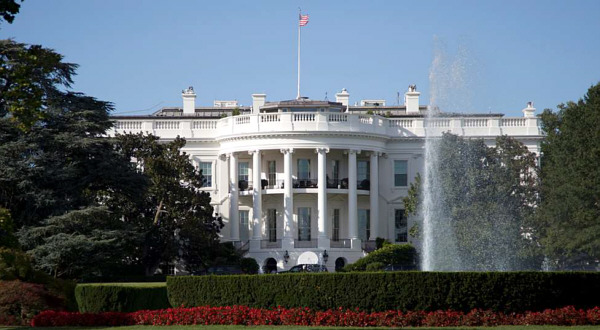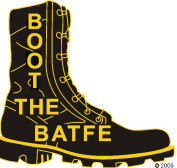

An Ally In The White House
Means 2A Progress

(Carolyn Kaster/AP)
By John Commerford, NRA. July 28, 2025
Article Source
For those of us who were on the front lines, the effort that went into the 2024 elections still resonates, as does the satisfaction of returning Donald Trump to the White House and electing pro-gun majorities to the U.S. House and Senate. The relentless, "whole-of-government" assault the Biden-Harris administration had perpetrated on the Second Amendment was over. There was, for a moment, space to breathe.
But as the late lawman, firearm instructor and friend of the NRA James Yeager used to preach, stillness in a fight is fatal. You must "get off the X" and keep moving to the next objective. And the fight over the right to keep and bear arms never ends.
Fortunately, we are now moving forward. Part of that is undoing the damage caused by the prior administration and its collaborators. It also means enacting a positive, pro-gun agenda. This month, I can report progress on both fronts.
Make no mistake—our margins in Congress are narrow, and the energy and fearlessness of the Trump administration only serve to underscore the plodding, cautious nature of Capitol Hill. Our friends currently in the executive branch are as true as we've seen, but the president has only one term left to solidify his America First agenda in as many critical areas as possible. And the government bequeathed to him by his predecessor, despite the heroic efforts of DOGE, remains heavily populated by deep State careerists determined to do whatever they can to stonewall his objectives. Success is not a foregone conclusion.
For all that, however, we stand on the threshold of historic opportunities to achieve far-reaching reforms.
Much has already been written in the NRA's Official Journals about President Trump's executive order titled Protecting Second Amendment Rights. NRA-ILA has been involved in the process of making the potential of that order a reality from the outset. Our involvement has gone little reported, both because we respect that progress is a team effort involving many contributors and because we are more invested in good outcomes than in who gets the credit. It's only fair to recognize, however, that ILA's input has undoubtedly influenced the direction of the administration's efforts.
On Feb. 28, NRA-ILA submitted a 34-page memorandum to Attorney General Pam Bondi entitled "Comments and Suggestions of the National Rifle Association on President Trump's Executive Order Protecting Second Amendment Rights." Exhaustively sourced with 179 footnotes, it went through each of the order's categories with comments and suggestions for implementation.
Fortunately, the memo, by all accounts, has had an attentive audience with the Trump administration. As the weeks and months have gone by, one item after another from ILA's suggested agenda (an agenda, it must be said, also pressed by other pro-gun groups offering their own input) has been checked off or put into motion.
The ILA memo established context for its recommendations by presenting an overview of the systemic bias against the Second Amendment within the entrenched federal bureaucracy. It noted this effort derived its origins, inspirations and methods from the anti-tobacco and anti-smoking campaigns of the 1970s and '80s, which included massive lawfare and "public health" propaganda elements.
While those campaigns did not concern a fundamental civil right (and may have had more solid factual and evidentiary bases), they took a symbol of American independence, freedom and rugged individualism and made it synonymous with sickness and death. Proponents of the campaign against guns believe they can achieve the same thing, though clearly guns are nothing like cigarettes.
ILA's input also emphasized that everything the government thought it knew about the Second Amendment in the 20th century—when it was considered irrelevant to private, individual rights and when gun control was therefore unrestrained—proved to be wrong. District of Columbia v. Heller (2008), which invalidated D.C.'s bans on handguns and functional firearms, should have made that clear.
But it would take another 14 years of resistance in the lower courts before the Supreme Court clarified and reasserted Heller's holdings in New York State Rifle & Pistol Association v. Bruen (2022). The difference was that Donald Trump, in the meantime, had appointed three originalist Supreme Court justices in the mold of Heller's author, Antonin Scalia, to the high court. All three of them, plus the three remaining members of the Heller majority, voted with the majority in Bruen, which restored Heller's textual and historical standard of review to Second Amendment cases. Bruen also admonished lower courts that they had been wrong to apply deferential means-end scrutiny to uphold virtually every gun-control law that came before them, as this was the standard adopted in Heller's main dissent, not by the majority.
The memo included a list of takeaways from the Supreme Court's post-Heller Second Amendment jurisprudence, which included the following:
The modern era of gun control—including the licensing of acquisition, possession, and carry; the National Firearms Act; the Gun Control Act of 1968; categorical bans on common firearms; and the Brady Handgun Violence Prevention Act—developed under the erroneous elite consensus that the Second Amendment did not protect an individual right to arms or that an individual could only invoke the right in the context of participation in an organized militia. The validity of these laws, or specific applications of these laws, under a proper understanding of the Second Amendment is therefore suspect.
Items that were included in NRA-ILA's suggestions that have been completed or substantially enacted include: rescission of former Surgeon General Vivek Murthy's 2024 advisory Firearm Violence, a Public Health Crisis in America; formal repudiation of ATF's "zero tolerance" enforcement policy, with accompanying personnel and policy changes; review of which state firearm permits qualify as alternatives to NICS checks and publication of straightforward agency standards for this determination; and reversal of litigation positions that infringe on Second Amendment rights.
We've published articles about the first two categories in prior editions of this magazine. Since then, ATF has published fairer, more wholistic standards for FFL inspections. It has invited those whose licenses were revoked under "zero tolerance" to reapply for consideration under the new standard. The agency has revised its NICS-exemption policy by adding additional state permits to its qualifying list, clearly and accurately describing what is necessary to qualify, and explaining for each state permit that did not qualify the basis of its decision.
In terms of litigation, the U.S. Department of Justice (DOJ) has dropped a criminal charge against a man accused of possessing a "short-barreled rifle" based on him having a braced pistol. It has comprehensively settled ongoing litigation regarding forced-reset triggers (FRTs), including making plans to return previously confiscated FRTs and to allow those items to return to market. DOJ has also reversed its prior position that firearm suppressors are not "arms" and are therefore outside the scope of the Second Amendment.
Additional NRA-ILA suggestions the administration has begun to address include the following: creating achievable pathways for federal firearm rights restoration by prohibited persons; repealing Biden-era rulemakings concerning braced pistols, who must obtain a federal license to sell firearms, and which firearm frames, receivers or kits are considered regulated arms; ending the Biden-Harris administration's crackdown on firearm exports administered by the U.S. Commerce Department; using DOJ's Civil Rights Division to affirmatively counteract state and local infringements of Second Amendment rights; and defunding gun-control advocacy masquerading as public-health research.
I'll have more to say on these exciting developments in the months ahead. Suffice it for now, there is a sea change occurring in the executive branch's approach to Second Amendment rights.
DOJ's announcements of its plans to task the Civil Rights Division with vindicating the Second Amendment echoed language ILA used in its memo, which, in turn, was inspired by Justice Clarence Thomas. We wrote: "The Second Amendment is not a 'second class right'; it is entitled to the same respect and protection as any other civil right."
Later, Harmeet Dhillon, assistant attorney general for civil rights at DOJ, would announce, "Second Amendment rights are civil rights." And Attorney Pam Bondi herself publicly declared: "The Second Amendment is not a second-class right, and under my watch, the Department will actively enforce the Second Amendment just like it actively enforces other fundamental constitutional rights."
In May, ATF also announced what it called a "New Era of Reform," one "marked by transparency, accountability and partnership with the firearms industry." It additionally distanced itself from the prior regime, stating: "This is not the same ATF of the last four years. We are fundamentally changing course with a renewed focus on rebuilding trust with federal firearms licensees (FFLs), gun owners and the public by prioritizing public safety and collaboration." A full accounting of ATF's planned changes can be found on its website.
All told, these are heady times for gun owners, but America's firearm prohibitionists are also energized. Fortunately, however, NRA-ILA has been working in partnership with the Trump administration, and the early results speak for themselves.
![]()
























